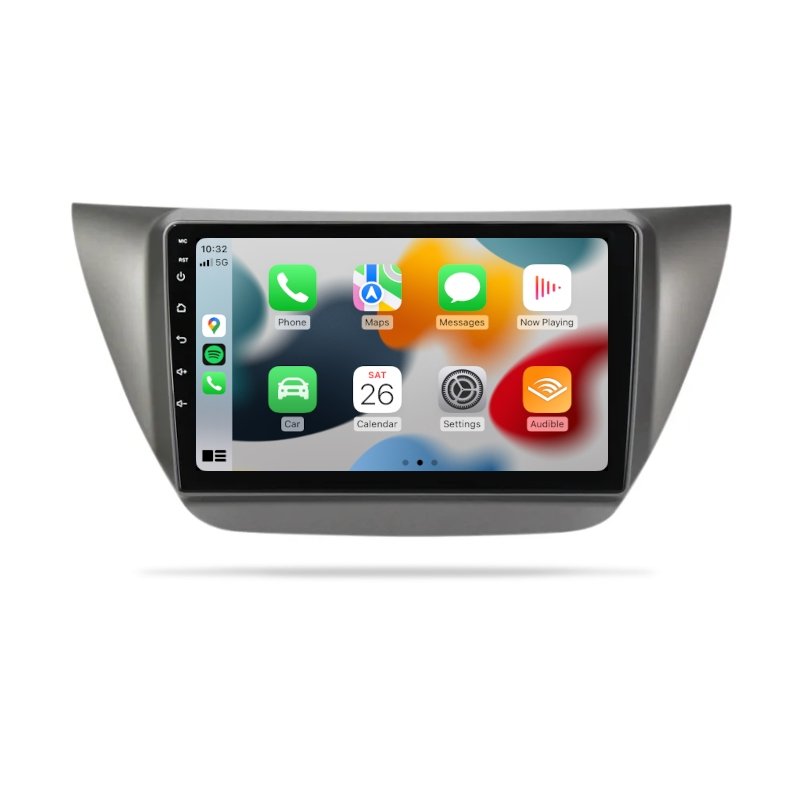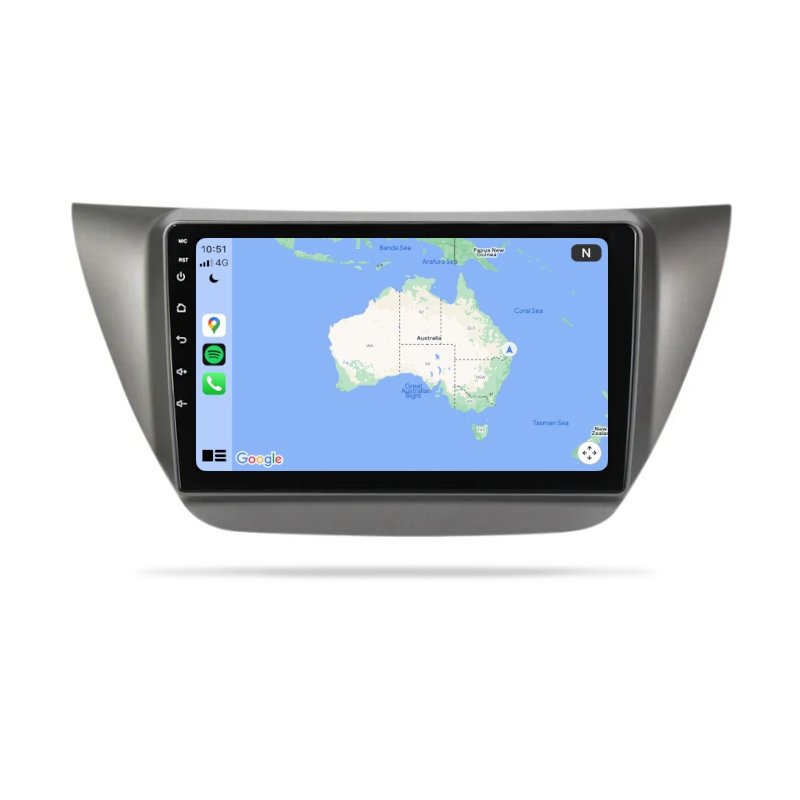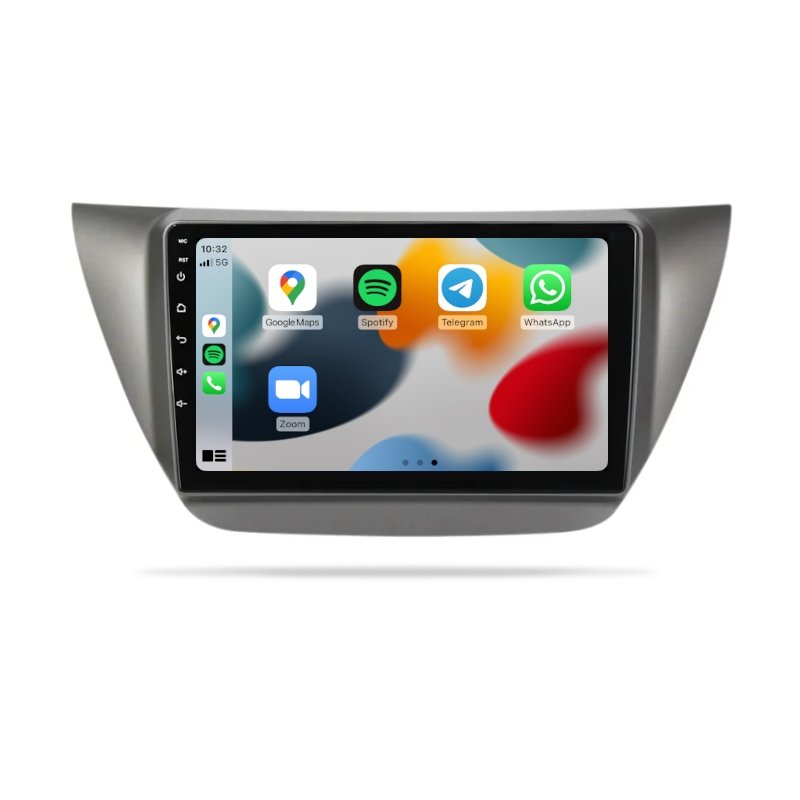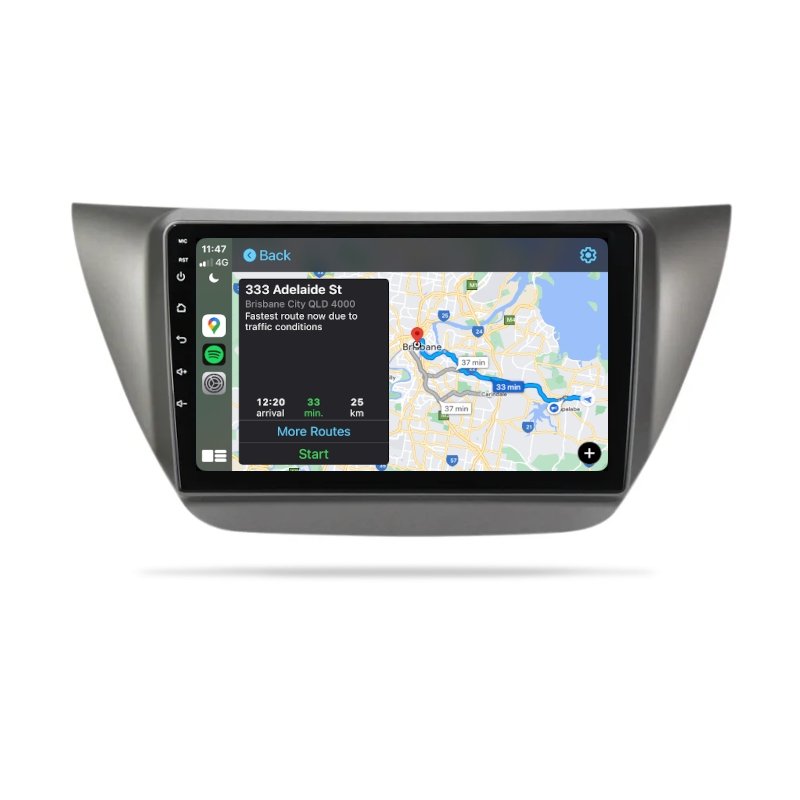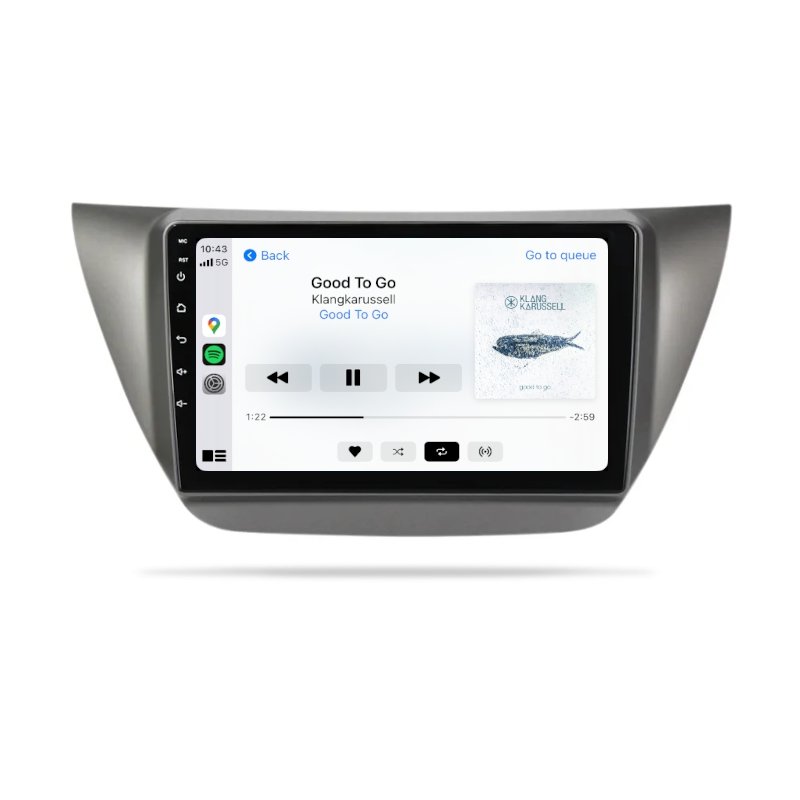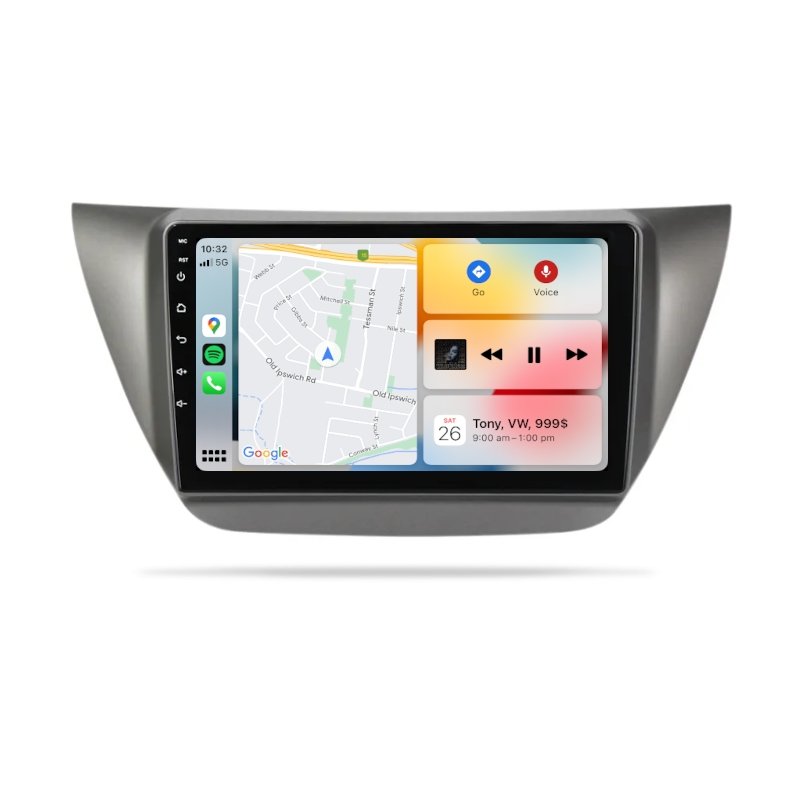Frequently Asked Questions
Everything you need to know about this head unit
Connect the single RCA cable with the yellow plug (included in your package) to extend your Bluetooth signal. This cable doubles as both a camera input AND a Bluetooth/WiFi antenna extension. The two small blue wires attached are antenna boosters that significantly improve connection stability. This simple connection takes 30 seconds and resolves 90% of Bluetooth issues. Make sure it's firmly connected even if you're not using a rear camera.
Try these proven solutions:
1. Quick Fix: Settings → Apps → Z-Link → Disable → Enable → Open (repeat each use)
2. Check Cables: Use the data/charge USB cable (not charge-only)
3. Bluetooth Setting: Disconnect all other Bluetooth connections - CarPlay needs exclusive access
4. Factory Reset Z-Link: Find the pink 'RESET' app, restart, reconnect Bluetooth, then try Z-Link
5. Sound Issues: Switch audio source to 'AUX' or 'USB/AUX' in your vehicle menu
Most issues are resolved with step 1 or 3!
The processor differs between models: The 2/32GB has a 4-Core processor, while 4/64GB and 8/128GB models feature the powerful 8-Core Cortex-A55 processor. Combined with RAM differences: The 2/32GB model with its 4-Core processor and limited RAM may experience slowdowns with heavy multitasking. The 4/64GB with 8-Core provides smooth performance for most users - no lag, seamless app switching, and enough storage for maps and music. The 8/128GB with 8-Core offers maximum performance with its generous RAM allowing unlimited multitasking and massive storage for extensive media libraries. Think of RAM like your desk space - more RAM means you can have more apps open simultaneously without slowing down.
Absolutely normal! These head units are complete replacement systems with their own GPS antenna, microphone, and Bluetooth module. Your factory connectors for these features won't be needed anymore. The important connections are: main power harness, speaker outputs, and the yellow RCA cable (even if not using a camera - it extends Bluetooth range). Any leftover factory plugs can be safely tucked away. If you're unsure about any connection, our support team is here 7 days a week.
Z-Link updates are handled through system firmware updates. Go to Settings → System → System Update. If an update is available, download it to a USB drive (FAT32 format) and install. Important: Never download Z-Link APKs from unofficial sources - they won't work and may cause issues. If you're having compatibility issues with newer iOS versions, the disable/enable workaround (Settings → Apps → Z-Link) usually resolves them while waiting for official updates.
Consider your usage:
• 2/32GB (4-Core): Budget option - fine for basic use, but may lag with multiple apps due to 4-Core processor and limited RAM
• 4/64GB (8-Core): Sweet spot - smooth Android Auto/CarPlay, multitasking, and ample storage
• 8/128GB (8-Core): Premium choice - unlimited multitasking, massive storage, future-proof for years
Most customers choose 4/64GB for the perfect balance of performance and value. The extra RAM makes a huge difference in daily smoothness!
The yellow RCA cable's blue antenna wires also boost WiFi signal! Make sure this cable is connected. Additionally, try these tips: Position the blue antenna wires away from metal surfaces, check that your phone's hotspot is set to 2.4GHz (not 5GHz) for better range, and ensure the head unit's WiFi sleep policy is set to 'Never' in Settings → WiFi → Advanced. For best performance with wireless CarPlay, keep your phone within 1-2 meters of the head unit.
Go to Settings → Sound → Equalizer and adjust to your preference. For more volume, increase the 'Loudness' setting. The 4/64GB and 8/128GB models have superior audio chips that provide cleaner, louder sound. If you have an amplifier, use the RCA outputs for best quality. Also check Settings → Factory Settings (password usually 126) → Audio settings for additional gain controls. Remember: higher-spec models (4GB+) include premium audio components for noticeably better sound.
Yes! Most vehicles work instantly. If not, use the steering wheel learning app: tap the steering wheel icon, press each button on your wheel, and assign functions. For newer vehicles with CANbus, we provide CANbus modules for automatic setup. Some vehicles may need the Key1/Key2 wires connected (usually included in our harness). If you're having trouble, let us know your exact vehicle model and we'll provide specific instructions.
We offer a 30-day return policy. If it doesn't fit or there's a compatibility issue, we'll work with you to resolve it. If you change your mind, a 20% restocking fee applies. Our team verifies compatibility before shipping to minimize issues. We provide installation support 7 days a week to help resolve any problems. With our 3-year warranty and Australian-based support, you can purchase with confidence. Full details in our Refund Policy.
Historical Overview and Evolution of the Mitsubishi Lancer:
Early Generations (1973-1983):
Initially introduced in 1973, the Mitsubishi Lancer began life as an efficient yet affordable sedan tailored to appeal globally. Marketed in Australia as the Chrysler Valiant Lancer and in some regions under the Dodge Colt badge, the first-generation Lancer drew acclaim for its simplicity, affordability, and commendable fuel economy—ideal traits amid the global energy crisis of its era. Notably, the sporty Lancer 1600 GSR established the nameplate's rally credentials in the late 1970s, particularly in the Rally Safari Championship, laying strong groundwork for future developments in motorsport and high-performance variations.
Mid-Generations (1983-1995):
Throughout the 1980s and early 1990s under various global monikers, including Mirage in certain markets and Colt elsewhere, the Lancer steadily elevated itself, becoming increasingly modernized and providing better options for comfort, practicality, and sportiness. The introduction of fuel injection technology, improved safety features, more potent powertrains, and growing attention to aerodynamic design signaled Mitsubishi's commitment to vehicle refinement and advancing performance capability.
Lancer Evolution (1992-2016):
Concurrent yet distinctly exceptional, the introduction and production of the Mitsubishi Lancer Evolution ("Evo") series from 1992 reshaped the Lancer’s worldwide prestige dramatically. Marrying the rugged durability drawn from rally racing and impeccable performance from potent turbocharged engines matched to sophisticated all-wheel-drive systems, the Evo distinguished itself by securing numerous World Rally Championship victories. Across ten prominent Evolution models, the series secured admiration from both motorsport circles and road-going enthusiasts globally.
6th Generation - Lancer CJ Series (2000-2007):
Entering the new millennium, the Mitsubishi Lancer (CJ series, internationally often named the "CS," depending on market) significantly raised standards in aesthetics, practicality, and refinement. Featuring smoother, more aerodynamic styling, improved interior materials, intuitive ergonomic layout, enhanced comfort, and increased standard equipment, this iteration was warmly received. Particular acclaim came for its balanced handling, sensible dimensions, and dependable mechanical simplicity. Australian and Asian markets particularly embraced the model as a manageable, economical sedan suitable for urban lifestyle demands, whereas the U.S. and Canada favored it for loyal, everyday reliability under its own well-known identity.
This generation included iconic trims, notably the sporty OZ Rally Edition in North America, featuring cosmetic and suspension upgrades, bringing rally-inspired spirit into everyday urban driving routines.
7th Generation - Lancer CY Series (2007-2017):
Debuting in 2007, the dramatically redesigned Mitsubishi Lancer CY series represented an enormous leap forward in structural rigidity, driver engagement, interior refinement, and visual appeal. It progressed away from basic sedan conventions, embracing an aggressive front-end design with the recognizable "Jet Fighter" grille—a styling cue deeply influenced by Mitsubishi’s rally heritage, drawing instant brand recognition.
Available in multiple trims, including well-received models such as the ES, VR, VRX (in Australia), DE, SE, GT (in U.S. markets), and notable variations worldwide, the Lancer now featured redesigned interiors showcasing improved ergonomic considerations, enhanced seat comfort, and upgraded materials that substantially elevated everyday practicality. This era also introduced significantly higher safety ratings, enhanced driving dynamics courtesy of the firmer chassis, intuitive driver-focused cockpit layouts, and more refined engines.
Moreover, within the same generation—but specifically distinct and legendary—the Evolution X (2007-2016) secured its reputation as a performance benchmark. Loved universally for its potent yet tractable turbocharged engine, sophisticated AWD platform, and superb dynamics balancing daily road usability and performance capabilities, the Evo X became a crowning jewel within the Lancer family tree.
Integration of a Premium Infotainment Unit:
Considering this broad era from 2000 to 2010, a popular modern consideration amongst current owners rests within infotainment updates—an area where contemporary technologies deliver significant functional improvements. Particular aftermarket solutions, like the Brummstadt premium head unit, provide comprehensive usability and connectivity improvements precisely tailored toward the Mitsubishi Lancer models from this era.
The Brummstadt head unit incorporates both wired and wireless compatibility with Apple CarPlay and Android Auto, effortlessly integrating modern smartphone features directly into driving experiences. Owners benefit distinctly through quick access to Google Maps, Apple Maps, WAZE, or virtually any navigation application directly via these platforms. Imagine an evening dinner with family or friends, concluding with an impromptu decision to visit another friend across town—destination coordinates swiftly preset on the smartphone, transitioning seamlessly, wirelessly onto the unit’s vibrant display immediately upon vehicle startup. No stress or cluttered device maneuvering, simply coherent navigation presented with clarity.
Safety and visibility further improve through the option to support additional dedicated 1080p HD front and rear cameras recording capability. The advanced visual monitoring ensures improved situational awareness and delivers valuable recorded evidence in traffic scenarios, offering drivers peace of mind in congested urban settings and challenging road conditions.
Entertainment extends further, catering particularly well to passenger satisfaction. The Brummstadt unit supports multiplayer gaming with USB-connected controllers. Long journeys become enjoyable and engaging, making travel experiences memorable for younger occupants or groups of friends.
Additionally, equipped with sophisticated smart voice control compatible with assistants such as Siri and Google Assistant, users gain intuitive hands-free management of navigation instructions, multimedia selection, and direct interactions with connected smart home technology. This practical integration might allow, for example, homeowners pulling into the driveway late in the evening to remotely activate exterior home lights or heating systems effortlessly via voice command, fostering a seamless combination of vehicle use and domestic convenience.
Vehicle Advantages and Owner Experience:
The Mitsubishi Lancer across each iteration from 2000 to 2010 commendably offered drivers a blend of efficient commuter practicality, compelling design aesthetics, responsive handling, and robust mechanics. Each generation managed distinct moves forward in refinement, dependability, quality, safety, and enjoyable driving experience. Both urban outings and extended explorations demonstrate the versatile strengths the Lancer offered, ensuring broad appeal, loyal respect, and genuine appreciation from its global customer bases.
Complementing this proven vehicular reliability and engaging driving performance through contemporary technology installations like the Brummstadt infotainment units helps bridge generational gaps, connecting original mechanical virtues with practicality and entertainment expectations synonymous with present-day driving. Satisfying contemporary needs—navigational reliability, connected services, enhanced visual safety, and diverse cabin entertainment—further revitalizes ownership satisfaction, applicability, and genuine pride in the Mitsubishi Lancer vehicle.
Collectively, viewing the enduring and adaptable heritage from its early compact-car origins, rally triumphs and evolution into a sophisticated yet approachable daily commuter, the Mitsubishi Lancer through the decade spanning 2000 to 2010 emerges as significantly more than motoring convenience—representing thoughtful evolution, durable design, meaningful practicality, and rewarding engagement behind the wheel.



